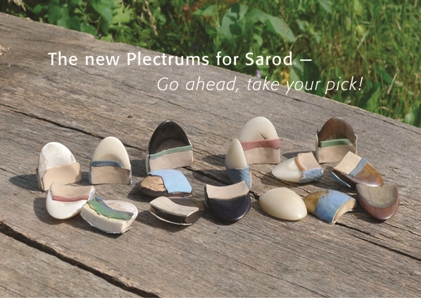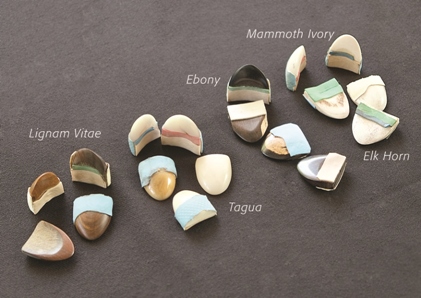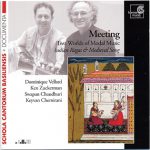Here are some of the new plectrums for the sarod. Go ahead – take your pick!


I recently turned my attention to experimenting with plectrums made from different materials. Coconut, although the traditional material for sarod plectrums, has several drawbacks. First, it is very difficult to find a piece that doesn’t have many imperfections, which make these picks rather noisy as they pass through the strings. And of course, the more scratchy sounding noises produced, the less enjoyment of the pure sound of the sarod. Also, coconut shells are difficult to fashion into an ideal shape, due to their natural curvature and lack of thickness.
Lignam Vitae – This is one of the hardest woods on the planet. It produces a powerful and pure sound, rich in overtones. It also can be polished to a very high degree so there is almost no noise as it makes contact with the strings. This is one of my favorites!
Tagua – This is actually the inside of a nut of the Tagua tree. It has a crystal clear sound and is very light. It is also very easy to shape, although sometimes there are imperfections that need to be avoided when cutting.
Ebony – Ebony is also a very hard and dense wood and produces a beautiful sound. It is not as powerful as the Lignam but very smooth and mellow sounding.
Mammoth Ivory – This variety of ivory comes from the tusks of the ancient mammoths, which in recent years have been excavated and sold for many of the same uses as ivory (which is now forbidden to be sold). It has a very impressive, powerful and crystal clear sound. It can be highly polished.
Elk Horn – This material is more porous than mammoth ivory but is still quite dense and produces a very strong and bright sound.
All of these materials are available commercially on the internet.






